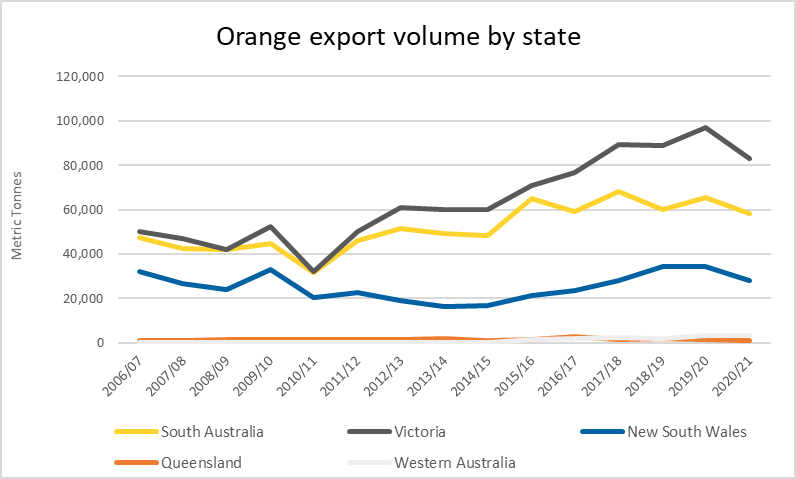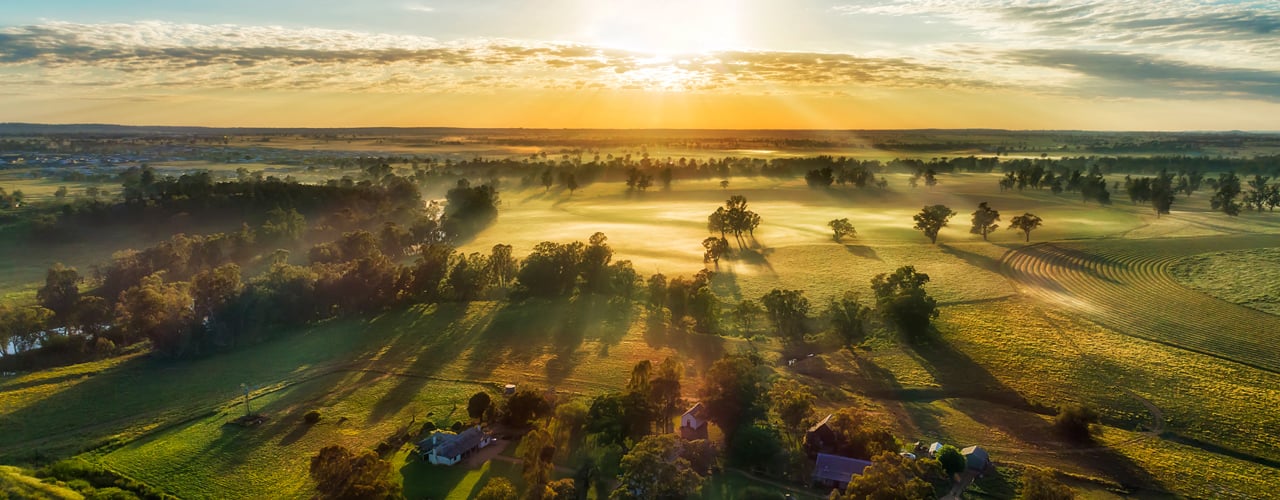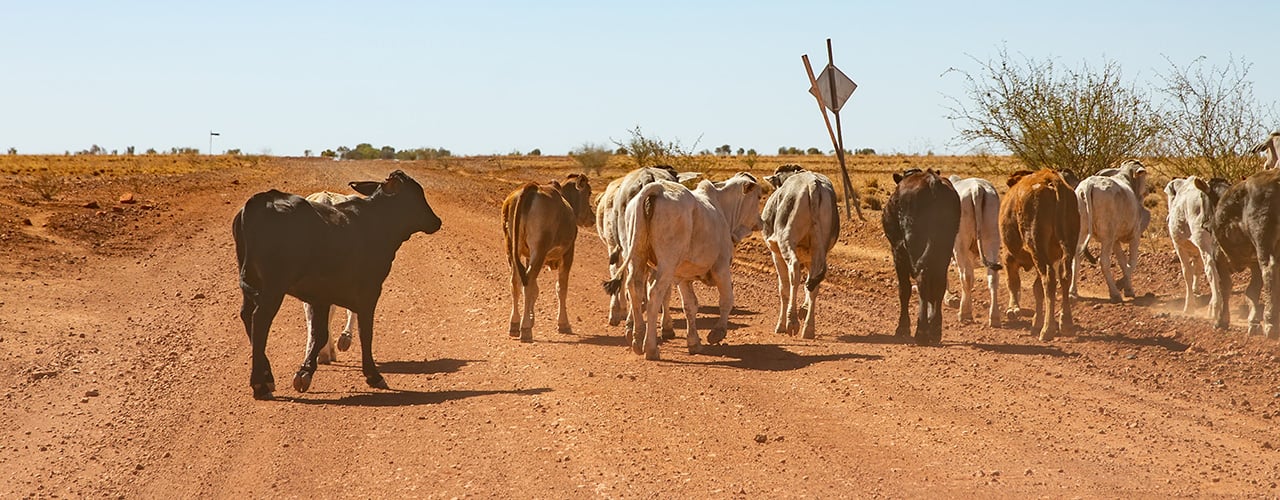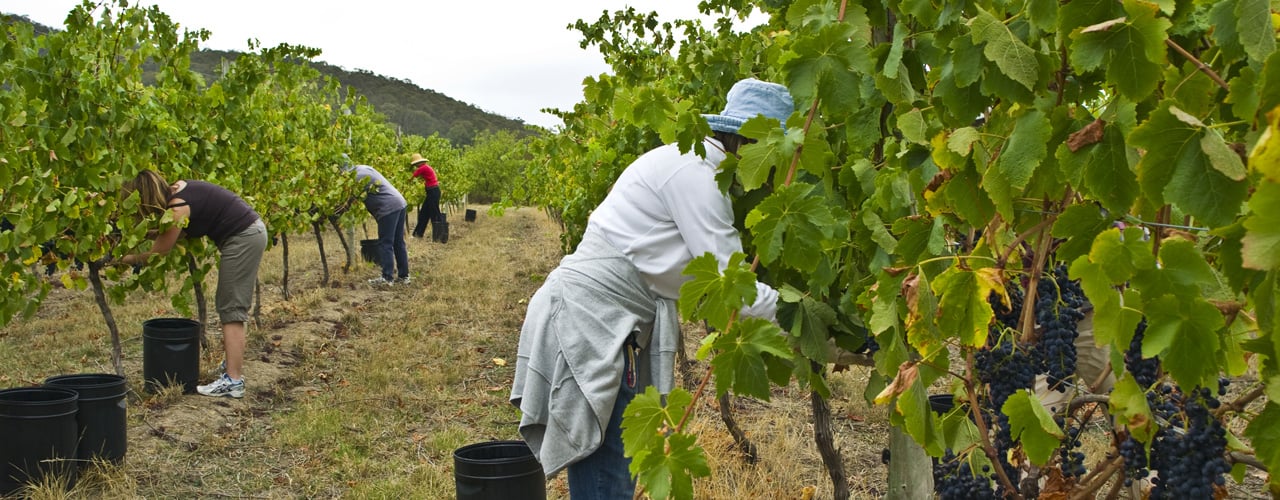Continuing our look across Australia’s “big things” we turn our attention to Australia’s “Big Oranges”. Orange harvest is complete following a fantastic season across much of the country. The strong orange output has followed difficult seasons affected by bushfires and drought.
The largest and most well-known ‘big orange’ is located in Berri, a town in the South Australian Riverland. This region is one of the largest citrus regions in Australia, making the location of this landmark particularly fitting. The Big Orange holds the title as the biggest of the "big fruit" in Australia. It incorporates a cafe, souvenir shop, function room, lookout and a 360-degree mural all enclosed within the orange. South Australia currently produces the second largest number of oranges nationally. Over 143,528 tonnes of oranges were grown in 2019/20. Of that, 65,355 tonnes were exported, the second most of any Australian state. This means almost half of all SA grown oranges were exported throughout this period.
The largest orange producing state in Australia is New South Wales. The state possesses a big orange located in Tenterfield, a town situated in the northeast corner of the state. Orange production within the state continues to boom, with 260,555 tonnes picked in the 2019/20 season. The majority of oranges continue to be grown within the Riverina region. Despite NSW’s significant level of orange production, the state is only the third largest exporter of oranges. Only 34,155 tonnes of oranges were exported in 2019/20 with China remaining the primary overseas destination. Unfortunately, there has been a considerable reduction in exports to China over the past six months. This is primarily due to extended delays at Chinese ports.
Queensland continues to be a major citrus growing region. The state contributes almost 20 per cent of Australia’s citrus production annually. Despite this, oranges only make up a relatively small portion of citrus production in Queensland. There were 3,670 tonnes of oranges produced in 2019/20. Regardless of the relatively small level of production, the state is home to an Australian record three big oranges. The largest of the big oranges is located the town of Gayndah. The town hosts the annual Orange Festival to celebrate the region’s growing citrus industry. Queensland exported 1,593 tonnes of oranges in 2019/20 or 43 per cent of production. Papua New Guinea was the primary export destination, taking 28.5 per cent of all Queensland orange exports.
Western Australia possesses the envious title of having the tallest ‘big’ orange in the nation. This towering structure topped with an orange stands over 10 meters tall and lies in the town of Harvey, south of Perth. While Western Australia’s big orange may top the charts in terms of height, the state’s orange production doesn’t quiet measure up. The state produced just 2 per cent of national orange production in 2019/20.
Surprisingly, Victoria is lacking a ‘big orange’, with no well-known orange landmarks currently located in the state. This is despite Victoria producing over 94,000 tonnes of oranges in the 2019/20 season. The Murray Valley region in the northwest of Victoria continues to produce the majority of the state’s oranges. Despite being only the third largest producer of oranges, Victoria remains the largest exporter nationally. Remarkably, almost all production state-wide is exported, primarily throughout Asia. With orange production expected to continue to rise, perhaps it's time Victoria got a big orange of its own!
While there may be no new ‘big oranges’ under construction (as far as we’re aware), the industry remains strong. Orange production continues to trend upwards across Australia due to strong growing conditions and additional plantings. This is particularly true in Queensland and Western Australia. Growers produced over 511,000 tonnes of oranges in 2019/20. In terms of varieties, 273,000 tonnes of Navel oranges and over 40,000 tonnes of Valencia oranges were produced.

Source: Hort Innovation, Global Trade Atlas




